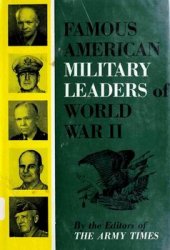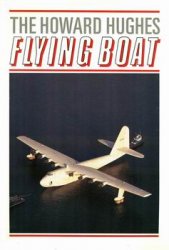On the night of June 29-30 1913 Bulgaria, without declaring war, attacked Greek and Serbian positions. The defenders were dug in, and although in the face of the first surprise assault they gave ground, their counterattacks on July 2 and 3 were successful and a stalemate ensued. This was broken on July 11 when Romania entered the war and began an unopposed march on Sofia; next day the Turks broke out and made for Adrianople, which they reoccupied on July 22. Fighting was over by the end of July and in a series of treaties between the various belligerents signed during August 1913 to March 1914, peace was patched up, although some contentious details remained outstanding.
Serbia, Romania, Greece and Turkey all gained from the new settlement at Bulgaria’s expense. Serbia did best from the wars, as her troops had done best in the field. Turkey lost most, but Russia had suffered a rebuff at the hands of an erstwhile protege and Austria was very seriously alarmed by the increased power of Serbia, whom she feared would foment disturbances among her southern Slav peoples. A full-scale European war had been feared on all sides and Germany and France had both taken steps to increase their armies on a vast scale in anticipation. They had not long to wait before a spark struck in the Balkans ignited the world. SKF.
Balkans, German campaign in
(1941). The Italian invasion of Greece in October 1940 proved to be a military and diplomatic disaster for the Axis. Not only did Italian forces suffer substantial reverses at the hands of the Greek Army but Great Britain sent military aid and secured a toehold in the Balkans. Furthermore, Anglo-Greek solidarity helped to fortify anti-Axis elements in Yugoslavia, resulting in the renunciation on March 27 1941 of a recent pact with Germany and the overthrow of the government that concluded the agreement. Hitler decided that this unstable and potentially threatening situation in the Balkans could not be allowed to continue.
His concern was all the greater as plans for the invasion of the Soviet Union, were well advanced. In December 1940 he had ordered preparation for Operation “Marita”, to secure the southern flank of the Balkans by seizing the north coast of the Aegean Sea. Therefore, with substantial German forces already deployed in Austria, Hungary, Romania and Bulgaria, Hitler amended “Marita” to become the basis for a general conquest of the Balkans. On April 6 1941 Belgrade was subjected to a devastating attack by the Luftwaffe, in which 17,000 of its inhabitants were killed. Meanwhile, in the east, elements of List’s German Twelfth Army invaded from Bulgaria, soon to be joined by von Weichs’ Second Army attacking from Austria and Hungary. Disorganized and rent by political disaffection, the Yugoslav forces quickly crumbled and, on April 12, Belgrade fell, followed two days later by the capitulation of the army. Stiffer opposition was offered by the Greeks, but with the bulk of the army deployed against the Italians in Albania, it was left to four Greek divisions and 60,000 Australian, New Zealand, British and Polish troops to hold the central and eastern frontiers. However, German attacks from Bulgaria outflanked the Metaxas Line in Thrace and Macedonia and, following an armoured thrust across the Greek-Yugoslav border at the Monastir Gap, the Anglo-Greek forces were obliged to retreat. This southerly withdrawal left Greek forces in the west exposed and, on April 20, the bulk of the army capitulated. Meanwhile attempts to stem the German advance were made at the Aliakmon lines, at Mount Olympus and Thermopylae but it was soon realized that defeat was inevitable. Evacuation offered the only chance of salvation for the British forces and in improvised mass embarkations, by May 1 some 50,000 men had been got away to Crete and Egypt. The relative success of this operation could not disguise Britain’s weakened position in the Mediterranean. But the operations in the Balkans had seriously disturbed the schedule for the German invasion of Russia by causing a five-week postponement from May 15 until June 22. MS.
Ball, Capt Albert (1896-1917). Br. An individualist who preferred to operate alone. Ball was one of the first RFC fighter pilots to win national fame in World War I, scoring at least 44 victories over the Western Front before he was killed in May 1917. He was awarded a posthumous vc.
Ballistic missile. A missile in which a rocket boosts a payload into a ballistic trajectory. The rocket, usually a multi-stage device, only burns for a very few minutes and acts like a gun propelling an unpowered warhead into the correct trajectory to strike the target. Guidance takes place in the boost phase with an inertial system of gyroscopes and accelerometers sensing the missile’s movement and maintaining it on course so that the warhead is in exactly the right place and travelling at the right speed - about 16,000mph (25,600kph) for an intercontinental missile - on burn out. An error of 1ft (0.3m) per second at this point can mean a miss of over a mile (1.6km). The warhead may go hundreds of miles into space before re-entering the Earth’s atmosphere. Modern missiles usually carry multiple or multiple independently targetable re-entry vehicles (mirvs) rather than a single warhead. EJG.
Balloons. These were first used in war in the 18th century. In World War I, they were extensively used to spot the fall of artillery fire and in World War II unmanned versions hoisted cables around likely bombing targets or from ships to destroy, or force to higher altitude, attacking aircraft. These were known as barrage balloons.
Ban Me Thuot, Battle of (1975). The People’s Army of Vietnam (pavn) launched the final offensive of the Vietnam War with an attack on Ban Me Thuot, capital of the central highlands’ Darlac province and HQ of the Army of the Republic of Vietnam (arvn) 23rd Division. The PAVN encircled Ban Me Thuot in early March 1975 with its entire 316th Division, one infantry regiment, one sapper regiment, two anti-aircraft regiments, two artillery regiments, two engineering regiments, an armoured regiment, and a communications regiment.




 World History
World History









